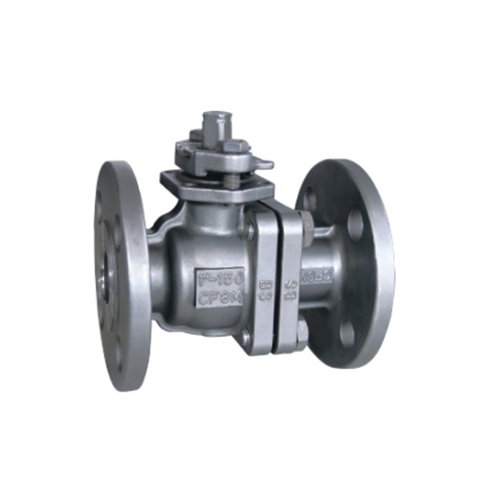
Check Valve Safety Features You Should Know
Introduction
Check valves are essential components in piping systems, designed to allow fluid flow in one direction while preventing backflow. They are widely used in industries such as oil and gas, water treatment, chemical processing, and HVAC systems. Ensuring the safety and reliability of check valves is critical to preventing system failures, contamination, and potential hazards.
This article explores key safety features of check valves, their importance, and best practices for selection, installation, and maintenance. By understanding these features, engineers and operators can enhance system performance and minimize risks.
---
1. Types of Check Valves and Their Safety Implications
Different types of check valves are designed for specific applications, each with unique safety features:
1.1 Swing Check Valves
- Design: A hinged disc swings open when flow is present and closes when flow stops.
- Safety Features:
- Non-slam design: Some models include springs or dampers to prevent violent disc closure, reducing water hammer effects.
- Full-port design: Minimizes pressure drop and turbulence, reducing wear and tear.
- Applications: Water and wastewater systems, low-pressure steam lines.
1.2 Lift Check Valves
- Design: A piston or ball moves vertically to allow flow and seats tightly when flow reverses.
- Safety Features:
- Positive sealing: Ensures no backflow, critical in high-pressure systems.
- Spring-assisted closure: Prevents delayed closing, reducing water hammer.
- Applications: High-pressure steam, gas, and chemical processing.
1.3 Dual-Plate Check Valves
- Design: Two spring-loaded plates open with flow and snap shut when flow reverses.
- Safety Features:
- Fast closing: Minimizes backflow and water hammer.
- Compact design: Reduces space requirements and weight.
- Applications: Oil and gas pipelines, power plants.
1.4 Ball Check Valves
- Design: A ball moves freely to allow flow and seats tightly when flow reverses.
- Safety Features:
- Self-cleaning: The ball’s movement prevents debris buildup.
- Low cracking pressure: Suitable for low-flow applications.
- Applications: Fuel systems, medical equipment.
1.5 Nozzle Check Valves
- Design: A flexible elastomeric nozzle opens under pressure and collapses when flow stops.
- Safety Features:
- No moving parts: Reduces wear and maintenance.
- Bubble-tight seal: Prevents contamination in sanitary applications.
- Applications: Food processing, pharmaceuticals.
---
2. Key Safety Features of Check Valves
2.1 Non-Slam and Silent Operation
- Problem: Traditional check valves can slam shut, causing water hammer (pressure surges that damage pipes).
- Solution: Spring-assisted or dampened check valves close smoothly, reducing shock waves.
- Benefit: Extends valve and pipeline lifespan.
2.2 Leak-Tight Sealing
- Problem: Poor sealing allows backflow, leading to contamination or system failure.
- Solution: High-quality elastomers or metal-to-metal seating ensures zero leakage.
- Benefit: Maintains system integrity and prevents hazardous fluid mixing.
2.3 Corrosion and Wear Resistance
- Problem: Harsh fluids (acids, seawater) degrade valve materials.
- Solution: Stainless steel, Hastelloy, or PTFE coatings enhance durability.
- Benefit: Reduces failure risks in aggressive environments.
2.4 Pressure and Temperature Ratings
- Problem: Exceeding rated conditions can cause valve failure.
- Solution: Selecting valves rated for maximum system pressure and temperature.
- Benefit: Prevents catastrophic ruptures or leaks.
2.5 Low Cracking Pressure
- Problem: High cracking pressure restricts flow in low-pressure systems.
- Solution: Valves with minimal opening pressure (e.g., spring-assisted designs).
- Benefit: Ensures efficient operation in sensitive applications.
2.6 Easy Maintenance and Inspection
- Problem: Poor access leads to neglected maintenance.
- Solution: Valves with removable internals or inspection ports.
- Benefit: Facilitates timely repairs and reduces downtime.
---
3. Common Check Valve Failures and Prevention
3.1 Water Hammer Damage
- Cause: Sudden valve closure creates pressure waves.
- Prevention: Use non-slam check valves or install surge suppressors.
3.2 Fouling and Blockage
- Cause: Debris buildup prevents proper sealing.
- Prevention: Install strainers upstream and use self-cleaning designs.
3.3 Wear and Erosion
- Cause: High-velocity fluids erode valve components.
- Prevention: Select hardened materials and avoid oversized valves.
3.4 Improper Installation
- Cause: Incorrect orientation (e.g., horizontal vs. vertical).
- Prevention: Follow manufacturer guidelines for mounting.
3.5 Material Incompatibility
- Cause: Chemical attack weakens valve materials.
- Prevention: Verify chemical resistance before selection.
---
4. Best Practices for Check Valve Safety
4.1 Proper Selection
- Match valve type to application (pressure, flow rate, fluid type).
- Consider environmental factors (temperature, corrosion risks).
4.2 Correct Installation
- Ensure proper orientation (arrow indicates flow direction).
- Avoid pipe misalignment, which stresses the valve.
4.3 Regular Inspection and Maintenance
- Check for leaks, corrosion, and wear.
- Clean or replace damaged components promptly.
4.4 System Monitoring
- Use pressure gauges and flow meters to detect anomalies.
- Implement automated alerts for valve malfunctions.
4.5 Training and Documentation
- Train personnel on valve operation and safety protocols.
- Maintain records of inspections and repairs.
---
5. Conclusion
Check valves play a vital role in maintaining system safety by preventing backflow and pressure surges. Understanding their safety features—such as non-slam designs, leak-tight sealing, and corrosion resistance—helps engineers select the right valve for each application. Additionally, proper installation, maintenance, and monitoring are essential to preventing failures and ensuring long-term reliability.
By following best practices and staying informed about valve technology advancements, industries can enhance operational safety and efficiency while minimizing risks. Investing in high-quality check valves and proactive maintenance ultimately leads to safer, more reliable systems.
---
This article provides a comprehensive overview of check valve safety features without referencing specific companies. Let me know if you'd like any modifications or additional details.
Ce site Web utilise des cookies pour vous garantir la meilleure expérience sur notre site Web.
Commentaire
(0)